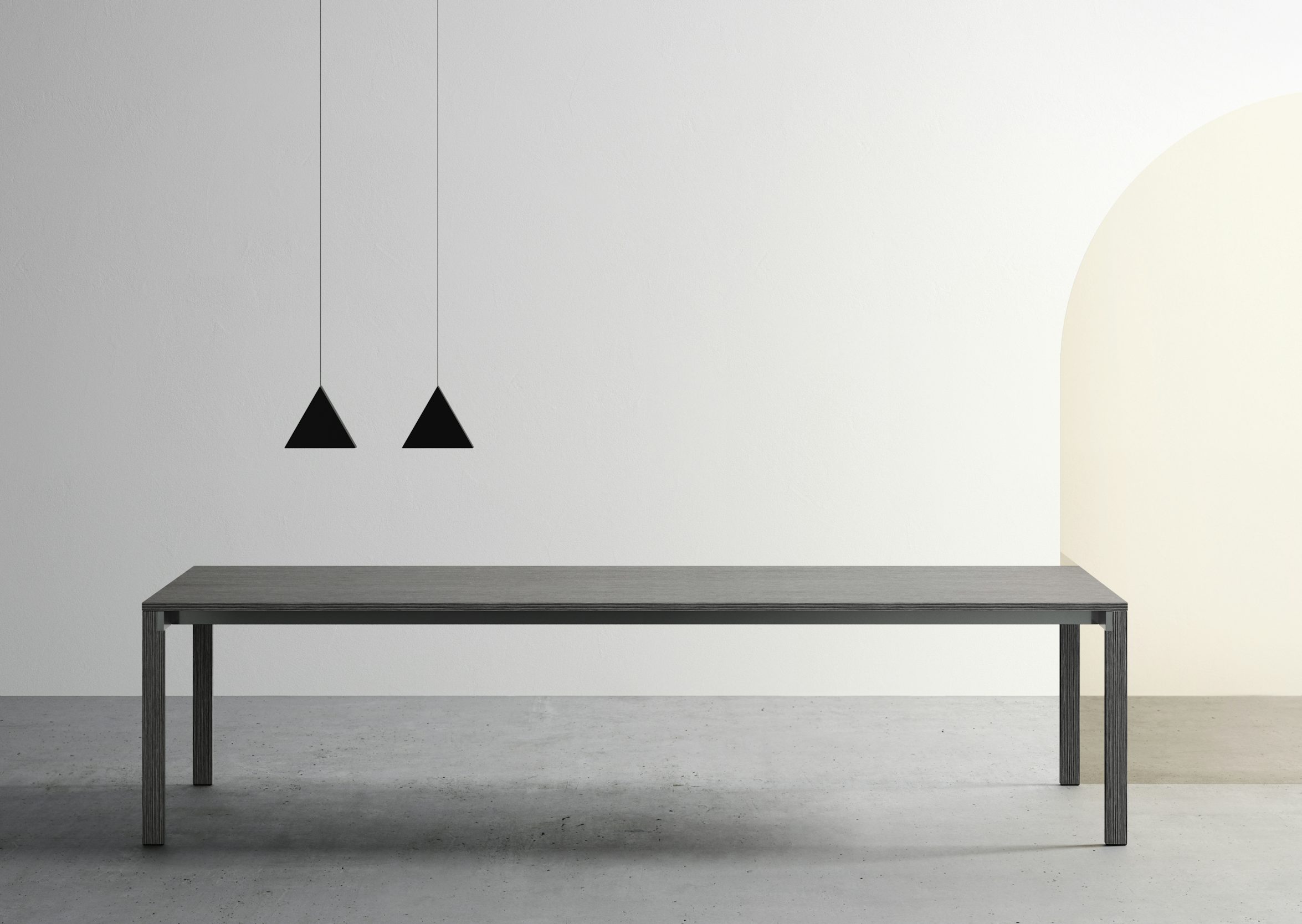Posted in Design Stories
Desalto: Redefining the Craft

Every so often, design can take us right to the edge and invite us to look over. Desalto exudes this power, a particular strength, and assurance that comes from the concerted establishment of a lineage of ideas. In their work, our expectations are swept aside with ease: a formed arm of a chair instinctively drapes to become the backrest, a sheet of steel folds like icing, and soft surfaces hold themselves upright.
Since its inception in 1991, Desalto has quietly gone about transcending the traditional definitions of a commercial brand. Their precisely crafted work is strongly rooted in the district of Brianza, Italy, an area renowned for its entrepreneurial and design-centered spirit. In this environment, Desalto quickly established a new tradition of strong, poetic and materially-rich forms. When in 1963 the four Oresenigo brothers embarked on the business as a combined pursuit, they can’t have envisaged exactly what would be produced in their Northern Italian studio, let alone the production methods they would be using some 25 years later. But what they had already conjured was a commitment to the design process and to the study of detail and proportion and an image associated with quality. They carefully set about bringing together a taste for simplicity and a sense of daring to produce unexpected and exquisitely refined pieces.
Today, the notions of tradition and innovation swing in and out of focus. For the Element table, Tokujin Yoshioka reimagined traditional table forms as a collection of crystalline stainless steel and aluminum forms reminiscent of natural minerals and quartzes. These complex three-dimensional forms balance, quite precariously, atop one another, the legs slipping out from beneath the tops, as if the whole table has been frozen mid-motion, caught as the tablecloth was whisked off.
Each part is set at its own specific angle, generating different relationships corresponding to the function – be it side table or dining tables. With this movement, the rest and solidity we subconsciously expect from perpendicular angles are thrown off. But as if to almost bring us back to balance, the static, pure matte black finish silences the forms, rendering the tables almost shadows of themselves.
Flicking through the catalog of works, it would be all too easy to dissolve into this rich genealogy of forms, objects, and ways of inhabiting the world. But that would ignore the complex process of making, the craft of transforming ideas into physical objects. The investment Desalto has made in production facilities and high-end technologies have created ripe conditions for design. Within this courageous place of design, there is a deep awareness of the wider impact of production. From a factory entirely powered by a rooftop photovoltaic system to a website compensated by forestry, their approach is holistic and ever-sensitive.


There’s plenty of evidence of the value of having a dedicated space to nurture ideas into physical form. A level of rigor is visible in every process, from precision in metalworking techniques and testing new digital mechanisms, to developing experimental customized solutions and finishes. The limits and possibilities of each unique materials are attended to, making themselves present in the design. In the resulting pieces, these technological pursuits are deeply embedded in the resolution of the design. It’s a balance that is part intuition, part innovation.
The superlative factory has become a sought-after testing ground for designers, from the well-known to the up-and-coming, the Italian and the international. Desalto invites individuals to work on distinctive projects which seek to explore individual objectives in support of their wider goals. The overlaps of different designers and new production methods lend an expansiveness to the Desalto oeuvre. In close collaboration, the objects are refined, reviewed and reflected on. This isn’t about producing what we already know, but a deep commitment to design, wherever it might take us.
This is that point at which Desalto transcends the traditional, the moment ideas are given weight. This is daring production and the resulting pieces boast all the posture and soul of the process. It’s this sense of anticipation and possibility that recurs in Desalto’s work that we’re so enamored with. Even the sculpture Clay table, with its perfect symmetry, expresses a finely calibrated moment of surprise. The focal point is the almost infinitely impossible area between the two cones, a technically ingenious connection that almost dissolves the moment of connection. You can’t quite tell whether they are balancing, pulling apart or something else entirely. And this, all finished in a lava-stone paste hand-spread with a palette knife.
Desalto revels in the exercise of redefining the limits. And given what their work has illuminated so far, we’re happy to be swept up in their power. That sense that we’re at the very brink of something else, of some wondrous possibility.

